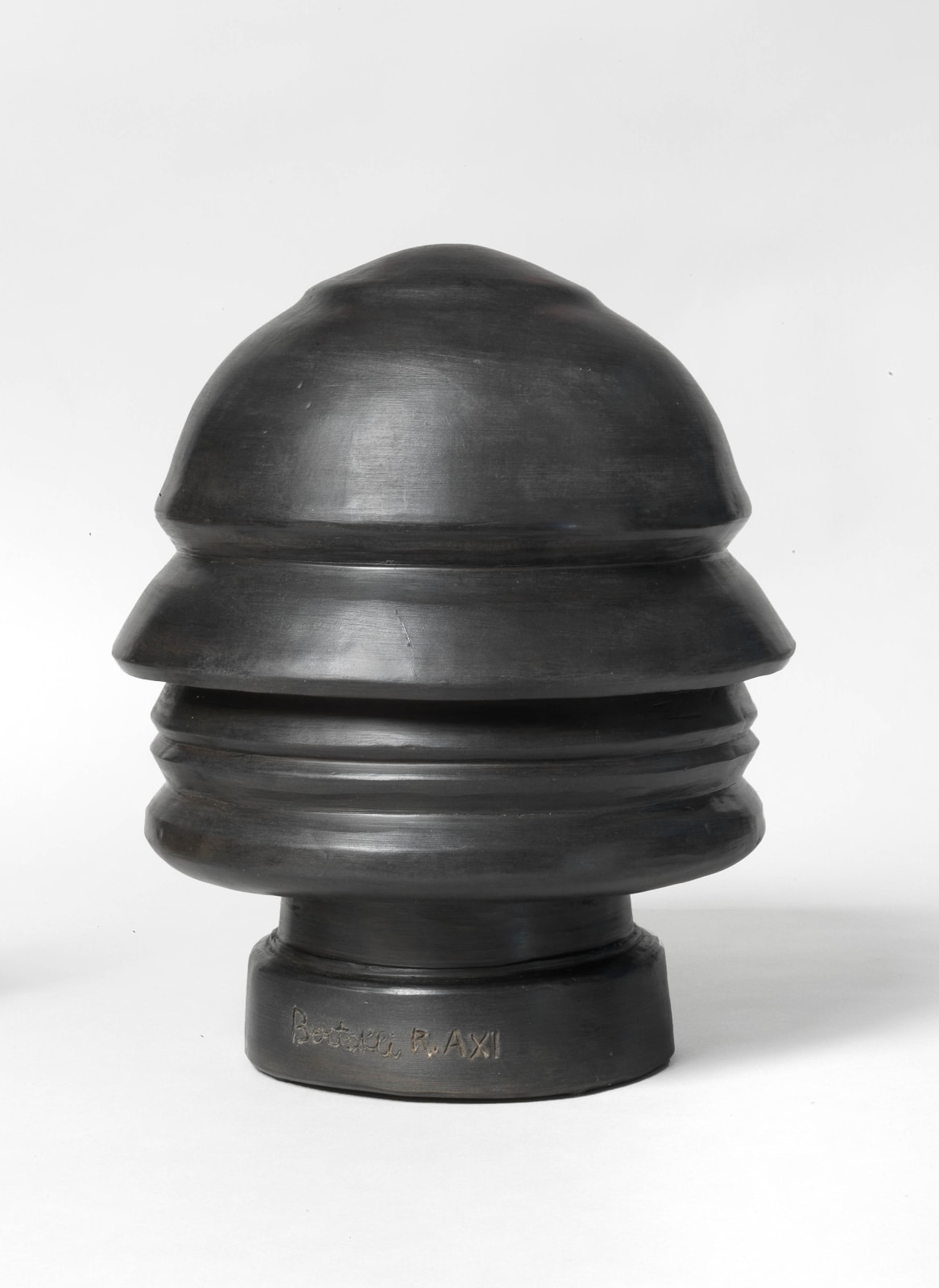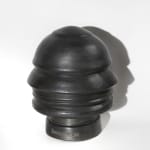-
Artworks


RENATO BERTELLI LASTRA A SIGNA 1900 -FLORENCE 1974
Profilo continuo (Dux), 1933Patinated terracottah 29,5 x 24,5 x 24,5 cmSigned on thebase: Bertelli R. AXI
SOLD
Provenance
Artist's studio; Florence, Marco Moretti; Florence, private collection.
Exhibitions
L’accento interiore. Continuità della figura nella scultura Toscana, Massa, Palazzo Ducale, 27 July – 6 October 1996;
Renato Bertelli. La parentesi Futurista, Predappio, Casa natale Mussolini, 1 June – 26 August 2012.Literature
Mussolini a profilo continuo, in “Toscana qui”, Bonechi Editore, Florence, January / February 1994, p. 45
L’accento interiore. Continuità della figura nella scultura Toscana, curated by M. Bertozzi, O. Casazza. M. Moretti, Massa, Palazzo Ducale, 27 July – 6 October 1996, p.47;
M. Moretti, Renato Bertelli, 1900 – 1974, monographic study, Masso delle Fate Edizioni, Signa 2007, p. 68
Renato Bertelli. La parentesi Futurista, curated by Marco Moretti, Bandecchi & Vivaldi, Pontedera, cover and p. 25
The Origin and Development of Renato Bertelli's "Continuous Profile" Sculpture
The sculptor Renato Bertelli (Lastra a Signa, 1900 – Florence, 1974) occupies a very unique place in the history of 20th century Italian sculpture: that of an artist whose worlwide renown is due not so much to his prolific figurative work as to his invention of a sculptural form devised in the course of his brief experience with Antonio Marasco's Independent Futurist Groups. Bertelli patented the form in July 1933 under the title of Head of Mussolini (Continuous Profile), subsequently shortened to Dux, whose innovative morphology set it apart from the many busts and portraits that swelled the "Leader's" abundant iconography from year to year. In the course of the most fertile decade of the era, Bertelli's sculpture was to enjoy greater commercial success than it was to elicit the appreciation of the critics. Ironically, critical and scholarly appreciation was to emerge only towards the final decade of the last century and to grow further in more recent times, attracting the attention of an international audience thanks to its inclusion in exhibitions on Italian art between the two wars organised by the MART of Rovereto (which owns a copy) in major European and American museums and even reaching as far afield as Russia and China.
The specific morphology of the Continuous Profile, consisting in the superimposition of circles whose protrusions form solids-voids in which one can discern a stylised profile of Mussolini in the round, was analysed for the first time in a monographic volume on the artist (Marco Moretti, Renato Bertelli, 1900-1974, Masso delle Fate Editore, Signa, 2007, pp.160) in which the author explains how the sculpture originated as a highly idiosyncratic reinterpretation of Boccioni's Futurist principles revisited through a static déco form.
If we examine the Profile in the proper light at eye level, we will note that the static nature of its mass tends to become lighter and lighter until we are under the illusion that it is revolving in space, emanating the dynamism that we intuit in Boccioni's rounded forms from every point of its protruding surfaces.
Bertelli planned to market his invention intensely and to that end he sold the patent to an industrialist to ensure that the Profile could be reproduced "in any material and any size", reserving for himself the right to issue a series in terracotta using forms of varying different sizes (thus not on the lathe, as is commonly supposed) signed Bertelli R. AXI, the year in which he claimed to have first come up with the idea. Thus the serial manufacture of an icon so popular as ultimately to identify with a whole nation was dictated by concrete commercial considerations far more than by the purely celebratory purpose that the more conventional portraits of Mussolini tended to share. From this "consumer" perspective, the serial dissemination of the greatest Italian symbol of its day may be seen as intuitive forerunner of the kind of iconographic exploitation, the "image consumerism", that was to explode some thirty years later with the Pop Art of Andy Warhol and his ilk. We should remember that in that art form, graphic processing was used to reproduce the image of figures who were part and parcel of society's popular imagination such as Kennedy, Chairman Mao, Marylin Monroe and Brigette Bardot, their portraits stigmatised in the growing phenomenon of the consumer civilisation as "objects of popular use" alongside such products as Campbell's Soup or Coca Cola.
Exactly ten years after Bertelli registered his patent, the fall of the Fascist regime was to trigger the iconoclastic destruction of its symbols, with portraits of Mussolini heading the list. That same fate befell the Continuous Profile. If it was in terracotta or marble it was smashed, while if it was in bronze it was crushed. We do not know how many of them met this fate, but we do know that a fair number managed to escape it, including the small desktop exemplars manufactured in a variety of materials as gadgets for the imminent Universal Expo in Rome in 1942 which was intended to celebrate the regime's 20th anniversary but which, in the event, was cancelled because of the war.
Over and above the "political" legacy of its era, the Continuous Profile has finally, after being consigned to oblivion for a long spell, resurfaced as a work of art, winning recognition as an invention of genius capable, thanks to its incisive sculptural synthesis, both of attracting critical attention and of inspiring a spate of creativity: for example the photography of Robert Mapplethorpe, who owned an exemplar and who produced a celebrated rotating Self-Portrait in the 1980s. The profile also inspired the sculptor Tony Cragg, whose circular forms Cragg openly admitted were inspired by Bertelli's work. In 2004 the architect Julian LaVerdiere, who designed the Tribute in Light to the Twin Towers following their destruction, created a Continuous Profile of George Bush which he subtitled "after Renato Bertelli". And in 2011 designer Karim Raschid create a large continuous profile in black resin for the Naples metro system which has since been installed at the Università station.
Thus the sculptural idea of this Tuscan artist whose name is carved in the history of 20th century Italian art on the strength of a single work alone, lives on into the new millennium.
- Marco Moretti
Join the mailing list
Subscribe to our newsletter to receive all the news about exhibitions, fairs and new acquisitions!



